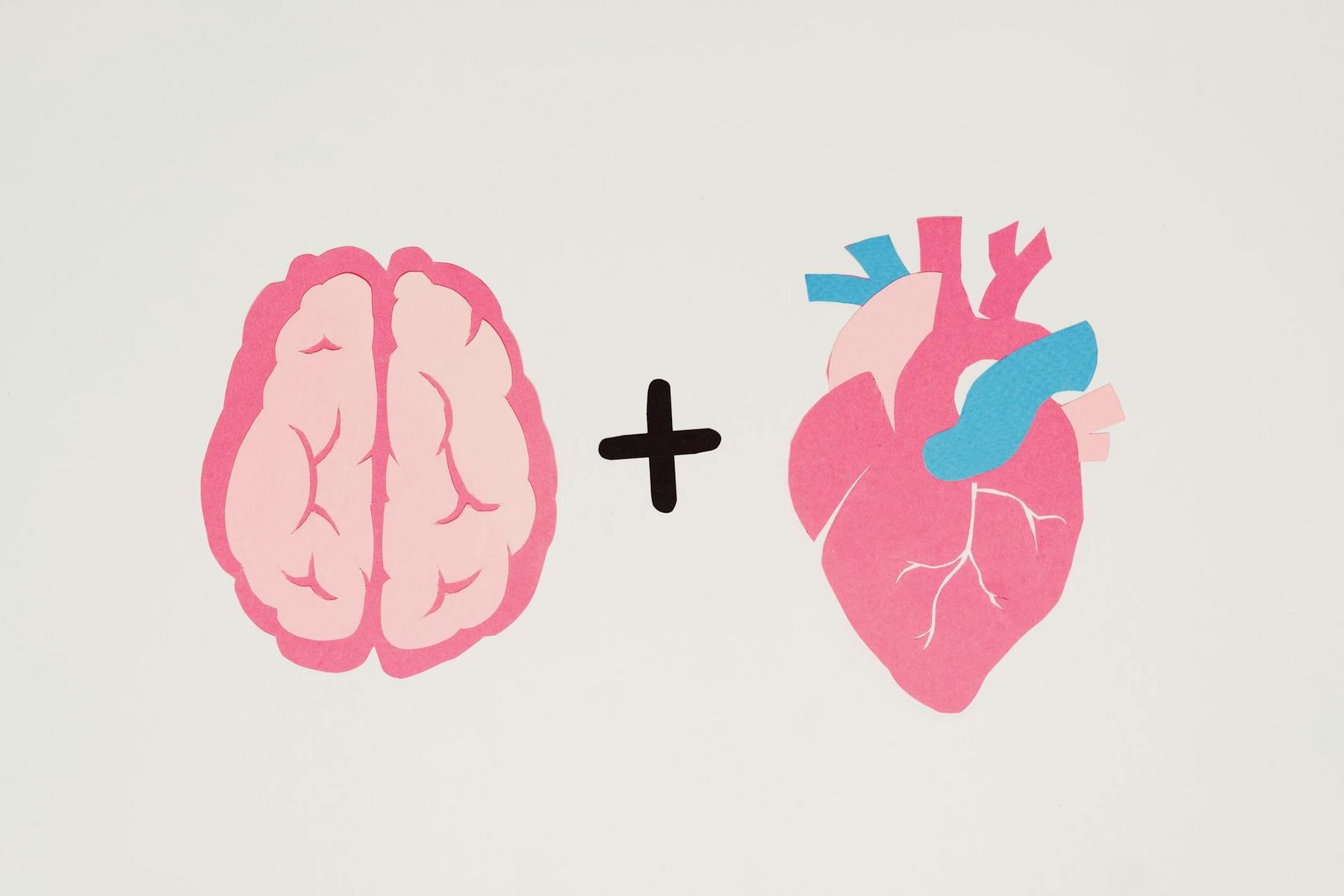In the labyrinth of modern life, stress has become an unwelcome companion for millions of Australians. Behind the racing heart, restless nights, and persistent fatigue lies an intricate biological system—the hypothalamic-pituitary-adrenal axis—orchestrating your body’s response to every challenge, deadline, and uncertainty. This elegant yet complex stress system fundamentals network determines whether you’ll thrive under pressure or crumble beneath it. Understanding how this system functions isn’t merely academic curiosity; it’s the key to comprehending why your body responds the way it does and what influences these critical responses.
What Is the HPA Axis and Why Does It Matter?
The hypothalamic-pituitary-adrenal axis represents one of the body’s most sophisticated communication networks, connecting three distinct endocrine structures into a unified stress response system. This neuroendocrine pathway begins in the hypothalamus, a region deep within the brain that serves as the body’s command centre for homeostatic regulation. When the hypothalamus detects a stressor—whether physical, psychological, or environmental—it releases corticotropin-releasing hormone (CRH).
This hormone travels through a specialised blood vessel system to the pituitary gland, a pea-sized structure at the brain’s base. The pituitary responds by secreting adrenocorticotropic hormone (ACTH) into the bloodstream, which then signals the adrenal glands—small, triangular structures positioned atop each kidney—to produce cortisol and other stress hormones.
The HPA axis matters profoundly because it regulates far more than stress responses. This system influences immune function, digestion, mood regulation, energy metabolism, and even how memories form during emotionally significant events. The axis operates through carefully balanced feedback loops, with cortisol levels signalling back to the hypothalamus and pituitary to moderate further hormone release. This elegant self-regulation prevents overactivation whilst ensuring adequate responses to genuine threats.
How Does the HPA Axis Respond to Different Types of Stress?
The stress system fundamentals reveal a sophisticated capacity to distinguish between various stressor types and calibrate responses accordingly. Acute stress—the kind experienced during a job interview or near-miss whilst driving—triggers a rapid HPA axis activation. Within minutes, cortisol levels surge, mobilising glucose for immediate energy, sharpening focus, and temporarily suppressing non-essential functions like digestion and reproduction.
Chronic stress, however, presents an entirely different physiological challenge. When stressors persist—whether from ongoing work pressures, relationship difficulties, or financial concerns—the HPA axis faces sustained activation. This prolonged stimulation can fundamentally alter how the system operates, potentially leading to either hyperactivation (excessive cortisol production) or, paradoxically, hypoactivation (blunted cortisol responses) as the system becomes dysregulated.
The HPA axis also responds differently to physical versus psychological stressors. Physical threats typically generate more immediate, intense responses, whilst psychological stressors—particularly those involving social evaluation or uncertainty—can produce more variable activation patterns. Importantly, the brain’s interpretation of a situation matters as much as the objective stressor itself. Two individuals facing identical circumstances may demonstrate markedly different HPA axis responses based on their perception, past experiences, and available coping resources.
| Stress Type | HPA Axis Activation Pattern | Primary Cortisol Response | Typical Duration | Adaptive Function |
|---|---|---|---|---|
| Acute Physical | Rapid, intense spike | Sharp elevation (200-400% baseline) | Minutes to hours | Immediate threat response |
| Acute Psychological | Moderate to high activation | Moderate elevation (100-200% baseline) | Hours | Performance optimisation |
| Chronic Physical | Initially elevated, may decline | Variable, often dysregulated | Weeks to months | Adaptation or exhaustion |
| Chronic Psychological | Sustained with diminished feedback | Elevated baseline or blunted response | Months to years | System dysregulation |
What Happens When the HPA Axis Becomes Dysregulated?
HPA axis dysregulation represents a spectrum of functional abnormalities rather than a single disorder. When the stress system fundamentals break down, the consequences ripple throughout nearly every physiological system. Hyperactivity of the axis—characterised by excessive cortisol production—associates with numerous health concerns including metabolic disruption, cardiovascular strain, compromised immune function, and mood disturbances.
Conversely, HPA axis hypoactivity, sometimes termed hypocortisolism, involves insufficient cortisol responses to stressors. This pattern often emerges following prolonged periods of stress and may manifest as persistent fatigue, difficulty responding to new stressors, and altered immune responses. The body essentially loses its ability to mount appropriate defensive reactions.
Several factors contribute to HPA axis dysregulation. Early life adversity can permanently alter the axis’s sensitivity and responsiveness, creating lifelong vulnerabilities to stress-related difficulties. Sleep deprivation disrupts the normal circadian rhythm of cortisol secretion, which typically peaks in the early morning and gradually declines throughout the day. Inflammatory processes, whether from chronic health conditions or lifestyle factors, can also interfere with the axis’s delicate feedback mechanisms.
The circadian disruption of the HPA axis deserves particular attention. Cortisol follows a predictable daily pattern, with levels rising sharply upon waking (the cortisol awakening response) and declining through the day to reach their nadir around midnight. When this rhythm becomes disrupted—through shift work, chronic stress, or irregular sleep patterns—the entire stress response system loses its temporal coordination, potentially affecting everything from glucose regulation to immune function.
How Does the Brain Influence HPA Axis Activity?
The relationship between brain regions and HPA axis function reveals the profound interconnection between psychological experience and physiological response. The prefrontal cortex, responsible for executive function and emotional regulation, exerts inhibitory control over the hypothalamus, essentially applying the brakes to stress responses when appropriate. This top-down regulation allows humans to modulate their physiological reactions based on context and learned experience.
The amygdala, conversely, acts as an accelerator, rapidly detecting potential threats and activating the HPA axis even before conscious awareness of danger. This ancient brain structure processes emotional significance and can trigger stress responses to psychological threats—criticism, social rejection, or uncertainty—with the same vigour it applies to physical dangers.
The hippocampus plays a dual role, both activating and inhibiting the HPA axis depending on circumstances. This structure’s involvement in memory formation means that past experiences profoundly shape current stress responses. A person who previously navigated similar challenges successfully may demonstrate more measured HPA axis activation, whilst someone with traumatic associations may show exaggerated responses.
Neuroplasticity—the brain’s ability to reorganise itself—means that repeated stress exposures can actually reshape these neural pathways. Chronic activation of stress circuits can strengthen amygdala-hypothalamus connections whilst weakening prefrontal control, potentially creating a biological bias towards heightened stress reactivity. However, this plasticity also offers hope, as targeted interventions may help restore more balanced patterns.
What Lifestyle Factors Influence HPA Axis Function?
The stress system fundamentals respond dynamically to numerous lifestyle variables, offering multiple potential intervention points for those seeking to support optimal function. Sleep stands paramount among these factors. Quality sleep allows the HPA axis to reset its circadian rhythm, clear accumulated cortisol, and restore sensitivity to feedback signals. Research consistently demonstrates that even modest sleep restriction can elevate evening cortisol levels and flatten the normal daily rhythm.
Physical activity presents a nuanced relationship with the HPA axis. Moderate exercise temporarily activates the system, producing a controlled stress exposure that may enhance resilience over time—a concept sometimes termed “stress inoculation.” However, excessive or poorly timed intense exercise can contribute to chronic HPA axis activation, particularly when combined with other stressors and inadequate recovery.
Nutritional status profoundly influences stress system function. Blood glucose stability affects cortisol secretion patterns, with reactive hypoglycaemia triggering compensatory HPA axis activation. Protein intake provides amino acid precursors for neurotransmitter synthesis, whilst micronutrient status—particularly magnesium, zinc, and B vitamins—supports the enzymatic processes underlying hormone production and metabolism.
Social connection operates as a potent modulator of HPA axis activity. Supportive relationships and perceived social support associate with more measured cortisol responses to stressors, whilst social isolation or conflictual relationships amplify activation. This reflects the deeply social nature of human physiology, where interpersonal neurobiology shapes our most fundamental stress responses.
Psychological approaches to stress—including mindfulness practices, cognitive restructuring, and various forms of self-regulation training—demonstrate measurable effects on HPA axis function. These interventions work through multiple mechanisms: reducing the frequency and intensity of perceived stressors, enhancing prefrontal cortex regulation of limbic responses, and potentially altering the epigenetic expression of genes involved in stress hormone production and reception.
What Does Current Research Reveal About HPA Axis Adaptation?
Contemporary understanding of the HPA axis emphasises its remarkable capacity for both adaptation and vulnerability. The concept of allostatic load—the cumulative wear and tear from chronic stress exposure—provides a framework for understanding how prolonged HPA axis activation contributes to various health concerns over time. This model recognises that whilst acute stress responses prove adaptive and protective, chronic activation depletes resources and compromises regulatory mechanisms.
Emerging research highlights individual differences in HPA axis function, moving beyond simplistic models to recognise that optimal stress responses vary based on genetics, developmental history, current life context, and specific demands faced. This personalised understanding suggests that effective support for stress system function requires individualised approaches rather than universal prescriptions.
The field increasingly recognises bidirectional relationships between the HPA axis and other physiological systems. The axis doesn’t merely respond to stress; it actively shapes immune function, metabolic processes, and even gut microbiome composition. These interconnections mean that supporting HPA axis function may yield benefits far beyond stress management alone, potentially influencing overall health and vitality.
Epigenetic mechanisms—changes in gene expression without alterations to DNA sequence—appear crucial to understanding how experiences shape HPA axis function across the lifespan. Early life stress can create lasting changes in how readily stress-related genes activate, whilst positive experiences and interventions may reverse some of these modifications. This dynamic quality offers both challenge and opportunity in addressing stress system dysregulation.
Supporting Your Stress Response System: An Integrated Perspective
Supporting optimal HPA axis function requires a comprehensive approach that acknowledges the system’s complexity whilst identifying practical intervention points. Rather than seeking to eliminate stress—an impossible and potentially counterproductive goal—the aim involves fostering resilience, appropriate responsiveness, and efficient recovery from stressor exposures.
Sleep hygiene emerges as perhaps the most foundational intervention. Maintaining consistent sleep-wake times, even on weekends, helps anchor the HPA axis’s circadian rhythm. Creating conditions conducive to sleep—darkness, cool temperatures, and minimal stimulation before bed—supports the natural decline in cortisol that permits quality rest.
Movement and physical activity, when appropriately dosed, provide controlled stress exposures that may enhance HPA axis resilience. The key lies in balancing activity with adequate recovery, avoiding the trap of excessive exercise as a stress management strategy that paradoxically increases allostatic load.
Nutritional approaches centre on maintaining stable blood glucose, ensuring adequate protein for neurotransmitter synthesis, and providing the micronutrients necessary for optimal neuroendocrine function. Regular, balanced meals prevent the reactive hypoglycaemia that triggers compensatory HPA axis activation.
Mind-body practices—from structured meditation to simple breathing exercises—offer accessible tools for enhancing prefrontal regulation of stress responses. These practices don’t eliminate stressors but rather modify how the brain interprets and responds to challenges, potentially reducing unnecessary HPA axis activation.
Social engagement and meaningful connection serve as perhaps the most evolutionarily ancient buffer against stress. Prioritising quality relationships and seeking support during difficult periods provides psychological benefits whilst demonstrably moderating physiological stress responses. The Australian cultural context, with its emphasis on mateship and community, offers natural opportunities for this crucial form of stress buffering.
The HPA Axis in Context: Systems Thinking for Modern Life
Understanding the HPA axis transcends mere biological knowledge; it represents a shift toward systems thinking about human health and wellbeing. This stress system fundamentals framework reveals that symptoms often attributed to “stress”—fatigue, difficulty concentrating, mood changes, immune vulnerability—reflect the downstream effects of a complex regulatory system responding to environmental demands.
This perspective moves beyond simplistic stress management advice toward a more sophisticated appreciation of how lifestyle choices, psychological patterns, and social contexts collectively shape neuroendocrine function. It acknowledges that supporting optimal HPA axis function isn’t about achieving a stress-free existence but rather cultivating resilience, appropriate responsiveness, and efficient recovery.
The integration of psychological, social, and biological factors in HPA axis regulation underscores the limitations of purely reductionist approaches to health. Addressing stress system dysregulation effectively requires consideration of multiple levels simultaneously—from cellular and hormonal processes to behavioural patterns and social environments.
As research continues illuminating the HPA axis’s role in health and disease, individuals gain increasingly sophisticated tools for understanding their own physiological responses. This knowledge empowers more informed decisions about lifestyle, recovery strategies, and when to seek professional support. The stress system fundamentals provide a roadmap for navigating modern life’s demands whilst maintaining the physiological coherence necessary for sustained wellbeing.
How long does it take for the HPA axis to recover from chronic stress?
Recovery timelines vary considerably based on the duration and intensity of stress exposure, individual factors, and the comprehensiveness of interventions employed. Research suggests that some HPA axis parameters may begin normalising within weeks of stress reduction, whilst others—particularly those involving structural brain changes or deep epigenetic modifications—may require months to years. The axis demonstrates remarkable plasticity, but sustained lifestyle modifications typically prove more effective than short-term interventions.
Can you test your HPA axis function at home?
Whilst comprehensive HPA axis assessment requires clinical testing through AHPRA-registered healthcare professionals, certain patterns may suggest dysregulation. Disrupted sleep-wake cycles, abnormal energy patterns (particularly difficulty waking or late-day energy surges), and altered stress responses may indicate axis dysfunction. However, only qualified practitioners can properly interpret symptoms within the broader context of individual health status.
Does age affect how the HPA axis responds to stress?
Age significantly influences HPA axis function across the lifespan. Infants and children demonstrate developing stress systems that remain highly plastic and sensitive to environmental influences. During adolescence, hormonal changes interact with the maturing axis. In adulthood, cumulative stress exposure and lifestyle factors increasingly shape function. Older adults often show alterations in cortisol rhythms and may demonstrate blunted responses to acute stressors, though significant individual variation exists.
What’s the difference between HPA axis dysregulation and burnout?
Burnout represents a psychological syndrome characterised by exhaustion, cynicism, and reduced professional efficacy, typically arising from chronic workplace stress. HPA axis dysregulation describes specific alterations in neuroendocrine function that may underlie or accompany burnout symptoms. Whilst burnout captures the subjective experience and behavioural manifestations, HPA axis dysregulation refers to the measurable physiological changes. The two concepts intersect but operate at different levels of analysis.
How does the HPA axis interact with other hormonal systems?
The HPA axis maintains intricate connections with numerous other endocrine systems. It influences thyroid function through complex interactions at multiple levels, affects reproductive hormones (which explains stress-related menstrual irregularities), and interacts bidirectionally with insulin and metabolic regulation. The axis also connects with circadian rhythm regulation through its relationship with the suprachiasmatic nucleus, creating the normal daily cortisol pattern. These interconnections explain why HPA axis dysregulation can produce wide-ranging effects throughout the body.













